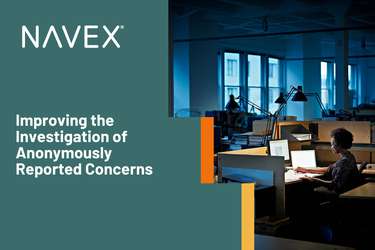Our coverage of the Top 10 Ethics and Compliance Trends to Watch in 2014 continues today (past discussions can be found here and here) as we tackle the issue of insider trading and its relationship with ethics and compliance.
#4: Insider Trading and the Return of Organizational Culpability
After a lengthy investigation, 2013 saw a record-breaking U.S. $1.8 billion insider trading penalty levied against a large diversified hedge fund. The case was the most publicized example of a trend that has been on-going for several years; the last four years have seen the U.S. Securities and Exchange Commission (SEC) file more insider trading actions than in any comparable period in its history.
Ethics officers too often make the mistake of thinking that the risk of insider trading is limited to “a handful of corporate insiders” or only applies to publicly traded companies. If your employees have access to information about any company – their own, a business partner, a supplier, a customer – and that information is not yet public and could impact share price, then they are an insider trading risk. If they trade on that information or leak it to someone else, they’ve crossed the line. It’s hard to imagine any company of any size, public or private, that doesn’t have this type of exposure. And, given that governments have made insider trading an enforcement priority, it’s clear that you really need to get ahead of this risk in 2014.
Updating your Code of Conduct and policies is a good first step, but, as with any risk area, the next step is to identify employees who might be at heightened risk. And remember, these employees don’t have to be ‘insiders’ or executives to be exposed. Employees in purchasing or supply chain management, legal or accounting may be especially well positioned to hear about material, inside information regarding your company or other companies.
Once you’ve identified the high-risk employees, provide additional training to them. You may even want to consider requiring annual acknowledgement that they understand and abide by your insider trading policy.
Don’t forget to also be on the alert for third parties who have access to your company’s information. If a supplier is dragged into an insider trading investigation it may implicate your employees and, even if it doesn’t, it can still damage your organization’s reputation – and, ergo, the bottom line.
Finally, and perhaps the most important lesson from recent case history is that for the first time since the indictment of Arthur Andersen in 2002 – which destroyed the firm and penalized thousands of innocent employees – the government once again seems willing to hold organizations culpable. In the SAC case, no one, at least so far, is going to jail; the finding was against the organization. Prosecutors pointed to “institutional failures” and they announced that they are once again willing to seek indictments of organizations despite the impact on employees and others who may have had nothing to do with the wrongdoing.
It may be time to dust off your copy of the U.S. Sentencing Guidelines for Organizations.








